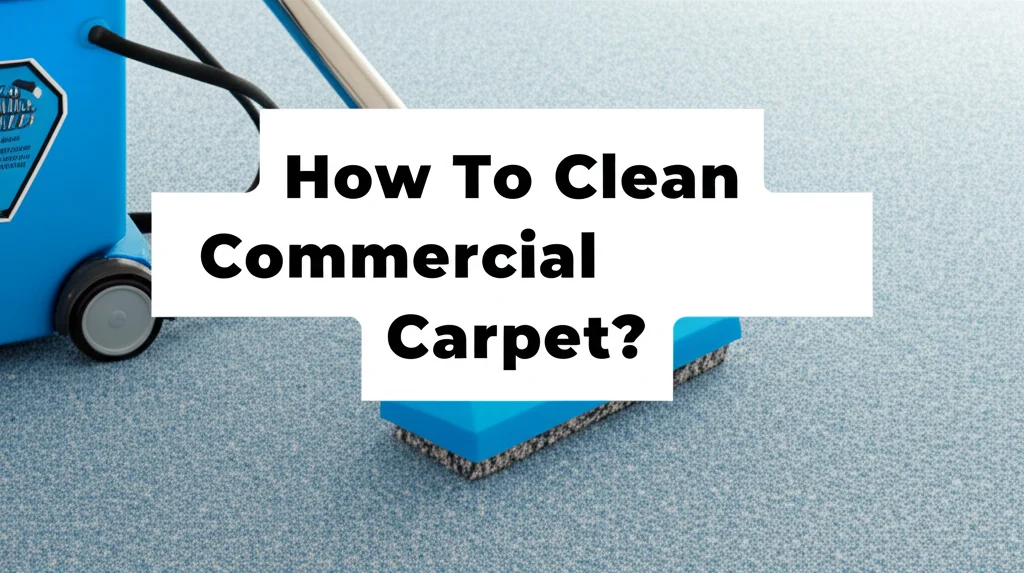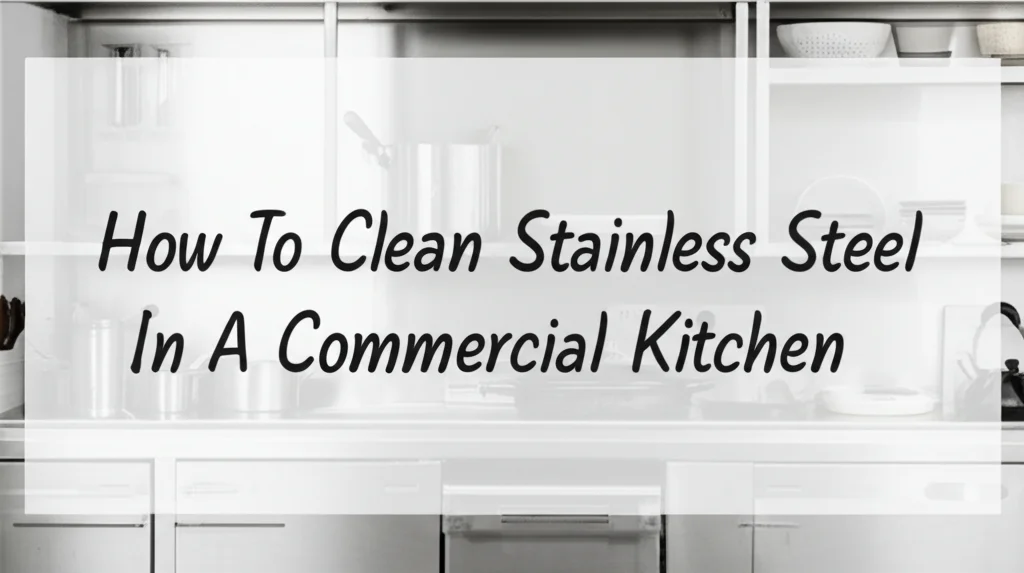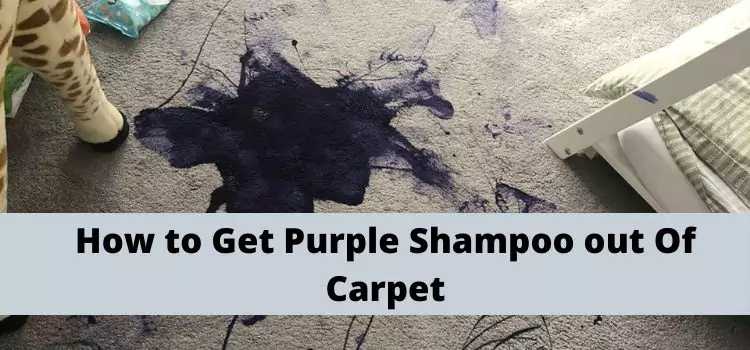· Commercial Cleaning · 7 min read
How To Clean Commercial Carpet?

Keeping Your Business Fresh: A Guide to Commercial Carpet Cleaning
Is your commercial carpet looking tired and worn? High foot traffic in businesses means carpets take a beating. Maintaining clean carpets isn’t just about appearances; it’s about creating a healthy and welcoming environment for employees and customers. This article will provide a comprehensive guide on how to clean commercial carpet, covering everything from daily maintenance to deep cleaning techniques. We’ll explore the best methods, tools, and solutions to keep your business’s carpets looking their best, and we’ll also discuss preventative measures to extend their lifespan. Let’s dive in and learn how to restore and maintain the beauty of your commercial carpets.
Takeaway:
- Regular vacuuming is crucial for removing loose dirt and debris.
- Spot cleaning addresses spills and stains promptly, preventing them from setting.
- Deep cleaning methods like hot water extraction provide a thorough clean.
- Professional cleaning services offer specialized equipment and expertise.
What is the best way to clean commercial carpet?
The best way to clean commercial carpet involves a combination of regular vacuuming, immediate spot treatment of spills, and periodic deep cleaning using methods like hot water extraction (steam cleaning). Professional cleaning is often recommended for optimal results and to extend carpet life.
1. Understanding Commercial Carpet & Cleaning Needs
Commercial carpets are built to withstand heavy use, but they still require consistent care. Unlike residential carpets, they face a much higher volume of foot traffic, increasing the rate at which dirt, grime, and stains accumulate. Understanding the type of carpet fiber is the first step. Common commercial carpet fibers include nylon, polyester, and olefin, each requiring slightly different cleaning approaches.
Identifying Your Carpet Fiber
- Nylon: Durable and resilient, nylon is a popular choice for high-traffic areas. It responds well to most cleaning solutions.
- Polyester: Stain-resistant and affordable, polyester is a good option for areas with moderate traffic.
- Olefin: Highly stain-resistant and often used in loop pile carpets, olefin is ideal for areas prone to spills.
Knowing your carpet fiber will help you choose the right cleaning products and methods, preventing damage and ensuring effective cleaning. Ignoring fiber type can lead to discoloration or fiber breakdown.
2. Daily & Weekly Maintenance: Preventing Build-Up
Consistent maintenance is the key to keeping commercial carpets clean and extending their lifespan. A proactive approach prevents dirt and grime from becoming deeply embedded in the fibers. Daily vacuuming and weekly spot cleaning are essential components of this routine.
Vacuuming Best Practices
- Frequency: Vacuum high-traffic areas daily and lower-traffic areas at least twice a week.
- Vacuum Type: Use a commercial-grade vacuum with strong suction and a HEPA filter.
- Technique: Overlap vacuum strokes to ensure complete coverage. Pay attention to edges and corners.
- Matting: Use entrance mats to trap dirt before it reaches the carpet. Clean these mats regularly.
Spot Cleaning: Addressing Spills Immediately
Spills happen, but quick action can prevent them from becoming permanent stains. Keep a spot cleaning kit readily available with appropriate cleaning solutions and absorbent cloths. Blot spills immediately, working from the outside in to prevent spreading. Avoid rubbing, as this can damage the carpet fibers. For tough stains, consider a specialized stain remover designed for commercial carpets. You can find more information on stain removal at https://www.beacleaner.com/how-to-get-gravy-stains-from-carpet/.
3. Deep Cleaning Methods for Commercial Carpets
While regular maintenance keeps carpets looking presentable, deep cleaning is necessary to remove embedded dirt and restore their appearance. Several deep cleaning methods are available, each with its own advantages and disadvantages.
Hot Water Extraction (Steam Cleaning)
Hot water extraction, often called steam cleaning, is considered the most effective deep cleaning method. It involves injecting hot water and cleaning solution into the carpet fibers and then extracting it with a powerful vacuum. This process removes deep-seated dirt, allergens, and bacteria. It’s best to hire professionals for this, as the equipment can be expensive and requires proper training.
Bonnet Cleaning
Bonnet cleaning uses a rotating pad (bonnet) soaked in cleaning solution to absorb dirt from the carpet surface. It’s a faster and more affordable option than hot water extraction, but it’s less effective at removing deep-down dirt. This method is best suited for light cleaning and surface-level stain removal.
Encapsulation Cleaning
Encapsulation cleaning uses a special cleaning solution that encapsulates dirt particles, which are then vacuumed away. It’s a low-moisture method that minimizes drying time and is suitable for carpets that are sensitive to water.
4. Choosing the Right Cleaning Solutions
Selecting the appropriate cleaning solutions is crucial for effective cleaning and preventing damage to your carpets. Always read the product label and test the solution in an inconspicuous area before applying it to the entire carpet.
pH-Neutral Cleaners
pH-neutral cleaners are generally safe for most carpet fibers and won’t cause discoloration or damage. They effectively remove dirt and grime without leaving behind a residue.
Enzyme Cleaners
Enzyme cleaners are excellent for breaking down organic stains like food, blood, and urine. The enzymes digest the stain, making it easier to remove.
Disinfectants
In high-traffic areas, using a disinfectant can help kill bacteria and viruses, promoting a healthier environment. Ensure the disinfectant is carpet-safe and follow the manufacturer’s instructions. If you’re looking for ways to clean other surfaces, you might find this article helpful: https://www.beacleaner.com/how-to-clean-kitchen-sink-mats/.
5. The Benefits of Professional Commercial Carpet Cleaning
While you can perform some carpet cleaning tasks yourself, professional cleaning offers significant advantages. Professional cleaners have the expertise, equipment, and cleaning solutions to deliver superior results.
Specialized Equipment
Professional cleaners use powerful equipment like truck-mounted extractors that provide deeper cleaning and faster drying times.
Expertise & Training
Trained technicians can identify carpet fibers, assess stain types, and choose the most appropriate cleaning methods.
Time & Convenience
Hiring a professional cleaning service saves you time and effort, allowing you to focus on running your business.
Extended Carpet Lifespan
Regular professional cleaning can extend the lifespan of your carpets, protecting your investment.
6. Preventing Future Damage & Maintaining Cleanliness
Once your carpets are clean, taking steps to prevent future damage is essential. Implementing preventative measures can significantly reduce the frequency of deep cleaning and extend the life of your carpets.
Entrance Mats & Walk-Off Rugs
Place entrance mats and walk-off rugs at all entrances to trap dirt and moisture before they reach the carpet.
Regular Foot Traffic Management
Consider using floor protectors under furniture legs to prevent crushing and wear.
Spill Response Plan
Train employees to respond quickly to spills and stains, following proper cleaning procedures.
Scheduled Cleaning
Establish a regular cleaning schedule that includes daily vacuuming, weekly spot cleaning, and periodic deep cleaning.
7. Frequently Asked Questions (FAQs)
Q: How often should I deep clean my commercial carpet?
A: Generally, commercial carpets should be deep cleaned every 6-12 months, depending on foot traffic and usage. High-traffic areas may require more frequent cleaning.
Q: Can I use a regular carpet cleaner on commercial carpet?
A: While some regular carpet cleaners may be suitable, it’s best to use products specifically designed for commercial carpets to avoid damage or discoloration.
Q: How long does it take for commercial carpet to dry after cleaning?
A: Drying time varies depending on the cleaning method and ventilation. Hot water extraction typically takes 6-24 hours, while encapsulation cleaning dries much faster.
Q: What’s the best way to remove gum from commercial carpet?
A: Freeze the gum with ice, then carefully scrape it off with a dull knife or spatula. Follow up with a spot cleaner to remove any residue.
Conclusion: Investing in Cleanliness for Your Business
Maintaining clean commercial carpets is an investment in your business’s image, employee health, and overall success. By following the tips outlined in this guide on how to clean commercial carpet, you can create a welcoming and professional environment for everyone. Remember that consistent maintenance, appropriate cleaning solutions, and professional cleaning services are all essential components of a comprehensive carpet care plan. Don’t hesitate to contact a professional cleaning service like Beacleaner to schedule a consultation and discuss your specific needs. A clean carpet is a sign of a well-maintained business, and it makes a lasting impression on your clients and employees.




